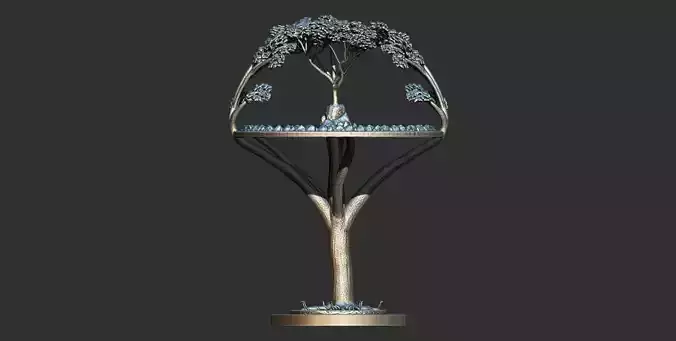1/12
- The tree of life serves as a significant archetype across numerous mythological, religious, and philosophical traditions worldwide. It is intricately linked to the notion of the sacred tree. The tree of knowledge, which connects the realms of heaven and the underworld—exemplified by Yggdrasil and the tree of the knowledge of good and evil in the Book of Genesis—along with the tree of life, which unites all forms of creation, are manifestations of the world tree or cosmic tree. These representations are depicted in various religions and philosophies as being one and the same.
In the realm of religion and mythology, numerous trees of life are featured in folklore, culture, and fiction, often symbolizing immortality or fertility. Their roots can be traced back to religious symbolism. Professor Elvyra Usačiovaitė notes that a common imagery found in ancient iconography consists of two symmetrical figures facing one another, with a tree positioned between them. These figures may represent various entities, including rulers, deities, or even a god alongside a human follower.
In ancient Mesopotamia, the Assyrian tree of life was depicted through a series of nodes and intersecting lines, signifying its importance as a religious symbol. This symbol frequently appeared in Assyrian palace reliefs, accompanied by human or eagle-headed winged genies, or the King, and was often depicted as being blessed or fertilized with a bucket and cone. Scholars specializing in Assyriology have yet to reach a consensus regarding the precise meaning of this symbol. The term Tree of Life has been assigned to it by contemporary scholars, as it does not appear in Assyrian texts, and no textual evidence related to the symbol is known to exist.
The Urartian tree of life is similarly significant. The Epic of Gilgamesh narrates a quest for immortality, while in Babylonian religion, King Etana of Kish sought a 'plant of birth' to grant him a son. This narrative has a well-documented history, as evidenced by cylinder seals from the Akkadian Empire (2390–2249 BCE). In the region of Urartu, located in the Armenian highlands, the tree of life served as a religious symbol and was depicted on the walls of fortresses.
REVIEWS & COMMENTS
accuracy, and usability.












